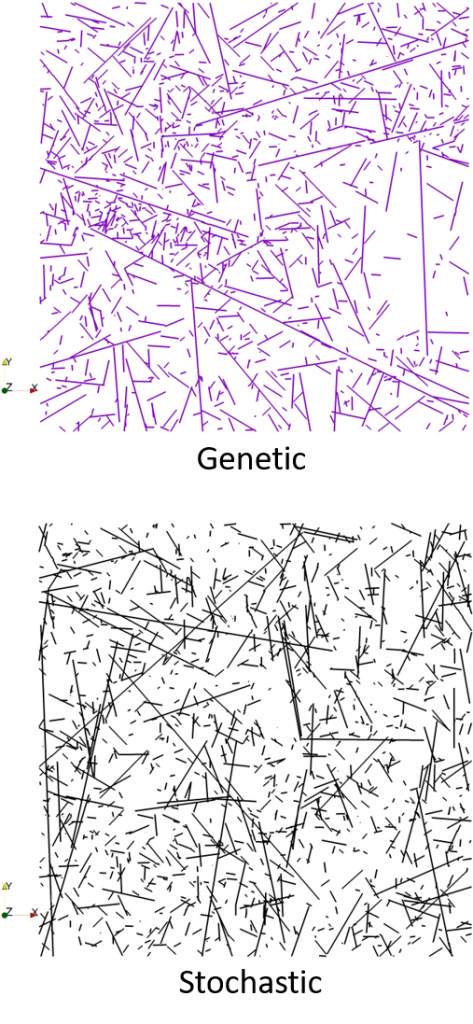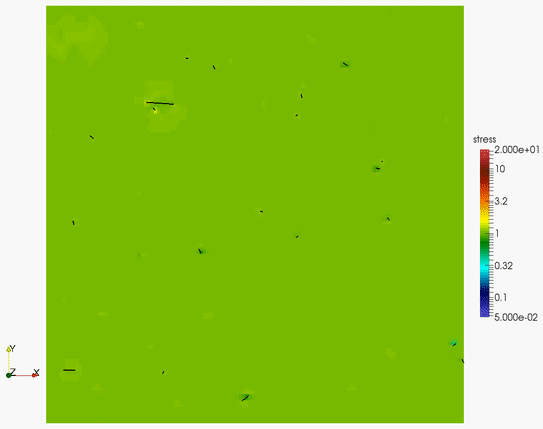Genetic Discrete Fracture Networks
Developing new genetic Discrete Fracture Network models based on relevant mechanical rules

Context
Fractures are ubiquitous geological structures controlling hydraulic and mechanical rock properties. Numerical modelling of fracture networks is therefore an important step for the simulation of physical processes in fractured rock mass, for many industrial applications such as nuclear waste disposal. Most of the time, a direct observation of the fractured volume is not feasible, and fractures cannot be modelled deterministically. Hence, the modelling must be stochastic, which makes it possible to generate three-dimensional networks, statistically equivalent to measurements and observations, but neglecting the spatial correlations resulting from the chronological fracturing process. On the other hand, purely mechanical models require too much numerical resources to model such dense networks. This project aims to develop genetic models, making it possible to model multiscale, dense fracture networks using simplified mechanical rules.
Project results
The fracturing process can be divided in three simplified stages: nucleation, propagation, and fracture arrest. In this work, we show that the spatial organization and scaling properties of such generated fracture networks result from these processes. We quantify these correlations using mathematical tools from the fractal theory and quantify their impact on the connectivity properties of generated networks. Finally, such networks show lower equivalent permeability and higher channeling than equivalent stochastic models.

Find out more
Lavoine, E., Davy, P., Darcel, C., Munier, R. (2020). A Discrete Fracture Network model with stress-driven nucleation: impact on clustering, connectivity and topology. Frontiers in Physics
Maillot, J., Davy, P., Le Goc, R., Darcel, C., & De Dreuzy, J. R. (2016). Connectivity, permeability, and channeling in randomly distributed and kinematically defined discrete fracture network models. Water Resources Research, 52(11), 8526-8545.
Davy, P., Le Goc, R., & Darcel, C. (2013). A model of fracture nucleation, growth and arrest, and consequences for fracture density and scaling.Journal of Geophysical Research: Solid Earth, 118(4), 1393-1407.